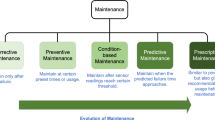Abstract
Defect detection is becoming an increasingly important task during the manufacturing process. The early detection of faults or defects and the removal of the elements that may produce them are essential to improve product quality and reduce the economic impact caused by discarding defective products. This point is especially important in the case of products that are very expensive to produce. In this paper, the authors propose a method to detect a specific type of defect that may occur during the production of web materials: periodical defects. This type of defect is very harmful, as it can generate many surface defects, greatly reducing the quality of the end product and, on occasions, making it unsuitable for sale. To run the proposed method, two different functions must be executed a large number of times. Since the time available to perform the detection of these defects may be limited, it is very important to consume the least amount of time possible. In order to reduce the overall time required for detection, an analysis of how the method accesses the input data is performed. Thus, the most efficient data structure to store the information is determined. At the end of the paper, several experiments are performed to verify that both the proposed method and the data structure used to store the information are the most suitable to solve the aforementioned problem.









Similar content being viewed by others
References
Agarwal, K., & Shivpuri, R. (2013). Knowledge discovery in steel bar rolling mills using scheduling data and automated inspection. Journal of Intelligent Manufacturing. doi:10.1007/s10845-013-0730-5.
Bernie, J., & Trepanier, R. (2009). A new technique for measuring periodic patterns within a paper sheet. Pulp and Paper Canada, 110(6), 39–42.
Bulnes, F., Usamentiaga, R., Garcia, D., & Molleda, J. (2012). Vision-based sensor for early detection of periodical defects in web materials. Sensors, 12(8), 10,788–10,809.
Bulnes, F. G., Usamentiaga, R., Garcia, D. F., Molleda, J., & Rendueles, J. L. (2013). Periodic defects in steel strips: Detection through a vision-based technique. IEEE Industry Applications Magazine, 19(2), 39–46.
Chacon-Murguia, M. I., Nevarez-Santana, J. I., & Perez-Regalado, W. J. (2010). Subjective measurement of cosmetic defects using a computational intelligence approach. Engineering Applications of Artificial Intelligence, 23(8), 1380–1387.
Cho, H. J., & Park, T. H. (2010). Wavelet transform based image template matching for automatic component inspection. International Journal of Advanced Manufacturing Technology, 50(9–12), 1033–1039.
Drean, J. Y., Harzallah, O., & Renner, M. (2010). Textile surfaces analysis and modeling based on statistical methods: Variance analysis and autocorrelation functions. Textile Research Journal, 80(17), 1833–1845.
Duan, F., Wang, Y. N., Liu, H. J., & Li, Y. G. (2007). A machine vision inspector for beer bottle. Engineering Applications of Artificial Intelligence, 20(7), 1013–1021.
Duan, X., Duan, F., & Han, F. (2011). Study on surface defect vision detection system for steel plate based on virtual instrument technology. In 2011 International conference on control, automation and systems engineering, CASE 2011. Article Id. 5997625.
Gutemberg, G. F. (2009). Disambiguating the recognition of 3d objects. In 2009 IEEE computer society conference on computer vision and pattern recognition workshops, CVPR workshops 2009 (pp. 2278–2285).
Kumar, A. (2008). Computer-vision-based fabric defect detection: A survey. IEEE Transactions on Industrial Electronics, 55(1), 348–363.
Malamas, E. N., Petrakis, E. G. M., Zervakis, M., Petit, L., & Legat, J. D. (2003). A survey on industrial vision systems, applications and tools. Image and Vision Computing, 21(1), 171–188.
Megahed, F. M., & Camelio, J. A. (2012). Real-time fault detection in manufacturing environments using face recognition techniques. Journal of Intelligent Manufacturing, 23(3), 393–408.
Meksen, T. M., Boudraa, B., & Boudraa, M. (2012). A method to improve and automate flat defect detection during ultrasonic inspection. International Journal of Adaptive Control and Signal Processing, 26(5), 375–383.
Mian, A. S., Bennamoun, M., & Owens, R. A. (2004). A novel algorithm for automatic 3d model-based free-form object recognition. In Conference proceedings—IEEE international conference on systems, man and cybernetics (Vol. 7, pp. 6348–6353).
Park, C., Choi, S., & Won, S. (2010). Vision-based inspection for periodic defects in steel wire rod production. Optical Engineering, 49(1), 017202-1–017202-10.
Shankar, N. G., & Zhong, Z. W. (2005). Defect detection on semiconductor wafer surfaces. Microelectronic Engineering, 77(3–4), 337–346.
Shigeno, M., Yamauchi, K., & Amanuma, Y. (2007). Development of surface detector for no. 3 tin temper mill (3tmp). JFE Technical Report, 9, 64–69.
Tewarson, R. P. (1973). Sparse matrices. New York: Academic Press Inc.
Torres, F., Jiménez, L. M., Candelas, F. A., Azorín, J. M., & Agulló, R. J. (2002). Automatic inspection for phase-shift reflection defects in aluminum web production. Journal of Intelligent Manufacturing, 13(3), 151–156.
Traxler, G., Klarner, J., & Huelble-Koenigsberger, G. (2005). Broken roll detection, application, algorithm and its basic principles of sensing. In Proceedings of SPIE—the international society for optical engineering (Vol. 5679, pp. 146–155).
Wan, W. H. (2001). Product quality control and its applications in industry. Journal of System Simulation, 13, 154–155.
Wang, F., Xu, X., Yuan, C., & Beek, P. V. (2011). Supervised and semi-supervised online boosting tree for industrial machine vision application. In Proceedings of the ACM SIGKDD international conference on knowledge discovery and data mining (pp. 43–51).
Wu, C. H., Wang, D. Z., Ip, A., Wang, D. W., Chan, C. Y., & Wang, H. F. (2009). A particle swarm optimization approach for components placement inspection on printed circuit boards. Journal of Intelligent Manufacturing, 20(5), 535–549.
Zhao, S., Huang, H., Wang, F., Li, Y., & Wei, G. (2009). Estimating periodic length and defect coordinates from a series of integer values. Measurement: Journal of the International Measurement Confederation, 42(4), 516–523.
Acknowledgments
The authors would like to thank the technicians and the engineers of ArcelorMittal Aviles for their helpful cooperation. This work was supported by contracts with ArcelorMittal corporation.
Author information
Authors and Affiliations
Corresponding author
Rights and permissions
About this article
Cite this article
Bulnes, F.G., Usamentiaga, R., Garcia, D.F. et al. An efficient method for defect detection during the manufacturing of web materials. J Intell Manuf 27, 431–445 (2016). https://doi.org/10.1007/s10845-014-0876-9
Received:
Accepted:
Published:
Issue Date:
DOI: https://doi.org/10.1007/s10845-014-0876-9




